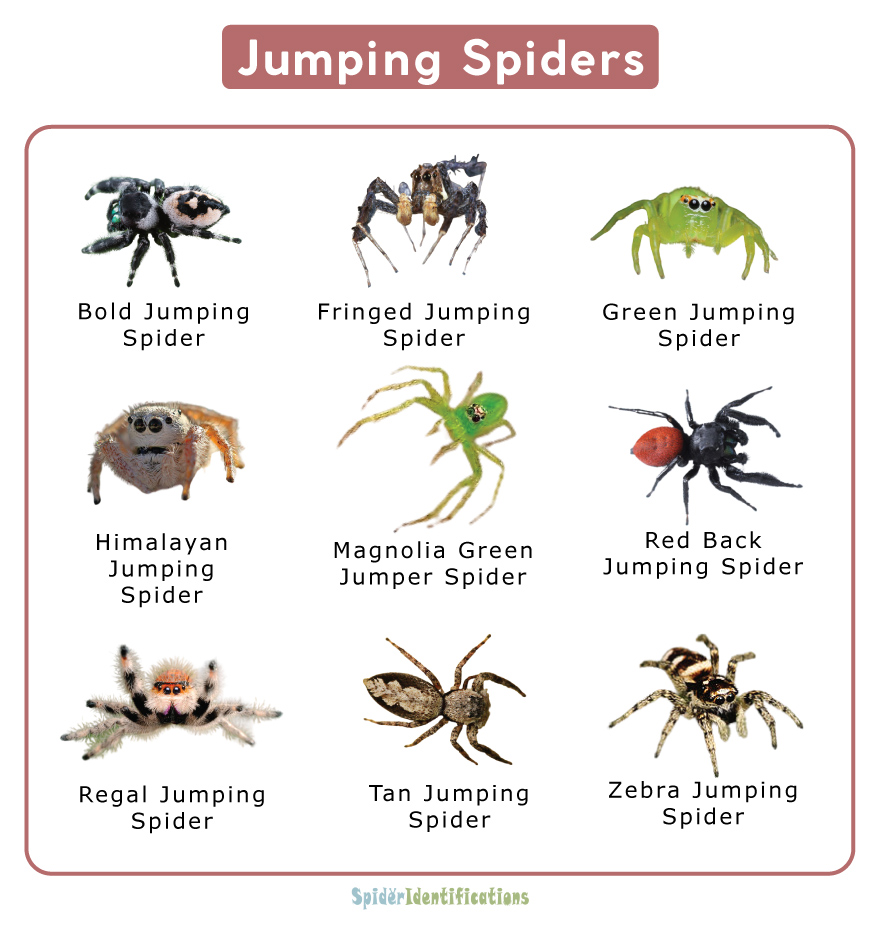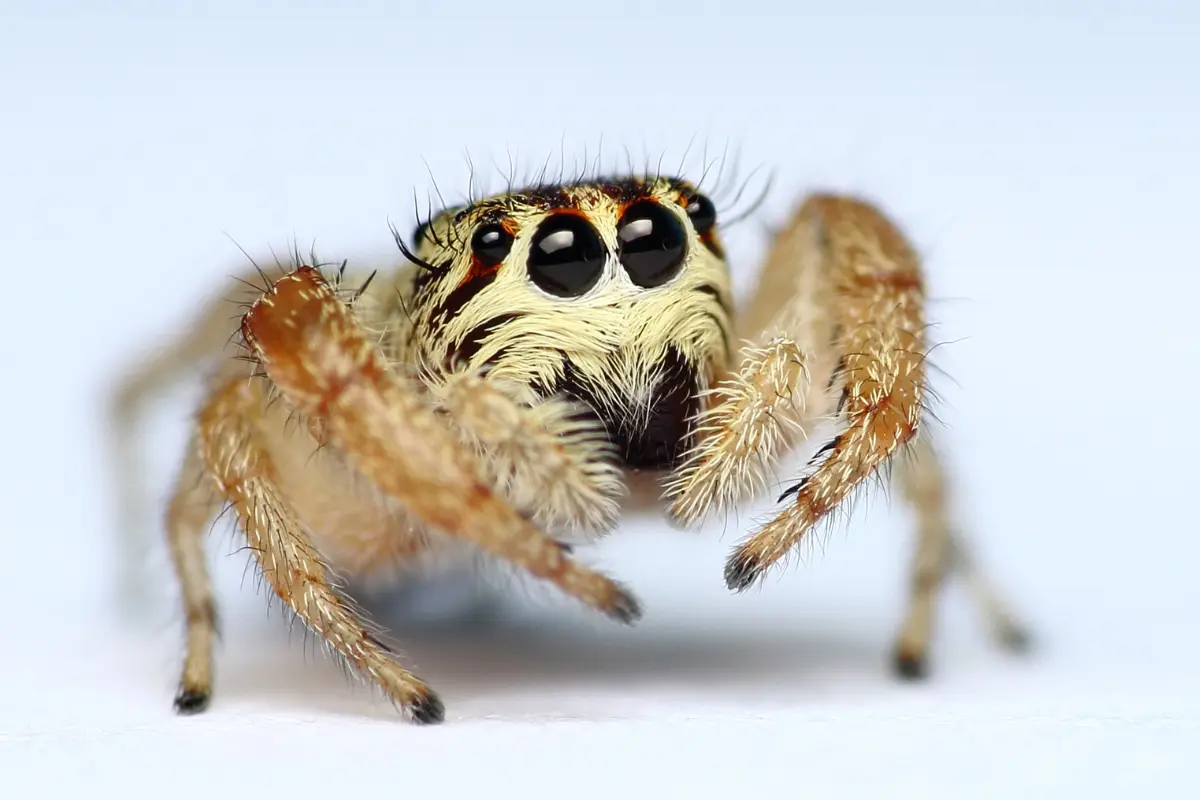Jumping spiders are often regarded as some of the most intelligent creatures in the arachnid world. Their fascinating behaviors and cognitive abilities have intrigued scientists and nature enthusiasts alike. These tiny creatures, despite their small size, exhibit remarkable problem-solving skills, memory, and adaptability. But why are jumping spiders so smart, and what makes them stand out in the animal kingdom?
For centuries, spiders have been misunderstood and often feared. However, jumping spiders defy common stereotypes about arachnids. They are not only visually striking but also possess a level of intelligence that challenges our preconceived notions about invertebrates. Their unique hunting strategies and social behaviors set them apart from other spiders, making them a subject of great interest for researchers.
In this article, we will delve into the reasons behind the intelligence of jumping spiders, exploring their cognitive abilities, evolutionary advantages, and the science behind their behavior. By the end, you'll have a deeper understanding of why these spiders are so remarkable and why they deserve our admiration rather than fear.
Read also:Obj And Khloeacute Kardashian The Ultimate Relationship Guide
Table of Contents
- Introduction
- The Biology of Jumping Spiders
- Exceptional Vision: The Key to Their Intelligence
- Smart Hunters: Jumping Spiders' Unique Hunting Techniques
- Memory and Learning: How Jumping Spiders Adapt
- Social Behavior in Jumping Spiders
- The Evolutionary Advantage of Intelligence
- Scientific Studies on Jumping Spider Intelligence
- Comparing Jumping Spiders to Other Spiders
- Conservation Efforts for Jumping Spiders
- Conclusion: Why Are Jumping Spiders So Smart?
The Biology of Jumping Spiders
What Makes Jumping Spiders Unique?
Jumping spiders belong to the family Salticidae, which is one of the largest families of spiders with over 6,000 known species. They are found all over the world, thriving in diverse habitats ranging from rainforests to deserts. Unlike most spiders, jumping spiders do not rely on webs to catch prey. Instead, they are active hunters, using their agility and intelligence to stalk and capture their meals.
One of the most distinctive features of jumping spiders is their excellent vision. They have four pairs of eyes, with the large anterior median eyes providing them with sharp, detailed vision. This exceptional eyesight allows them to perceive their environment with incredible accuracy, which is crucial for their hunting and navigation skills.
Physical Characteristics
Jumping spiders are small, with most species measuring between 1 to 20 millimeters in length. Despite their size, they are incredibly strong and can leap up to 50 times their body length. This ability is made possible by their hydraulic leg system, which allows them to generate powerful jumps with precision.
Exceptional Vision: The Key to Their Intelligence
Jumping spiders' vision is one of the primary reasons why they are considered so intelligent. Their anterior median eyes are capable of detecting fine details and color, making them one of the few arachnids with color vision. This ability helps them identify potential prey, recognize mates, and avoid predators.
In addition to their sharp eyesight, jumping spiders also possess a 360-degree field of vision. This allows them to monitor their surroundings from all angles, ensuring they are always aware of potential threats or opportunities.
Smart Hunters: Jumping Spiders' Unique Hunting Techniques
Strategic Stalking
Jumping spiders are not just random hunters; they employ strategic tactics to capture their prey. They carefully observe their target, plan their approach, and execute a precise jump to catch their meal. This level of planning and execution demonstrates their advanced cognitive abilities.
Read also:Discover The World Of Beautiful Unusual Houses A Unique Architectural Journey
Problem-Solving Skills
Studies have shown that jumping spiders can solve complex problems to achieve their goals. For example, they can navigate obstacles and find alternative routes to reach their prey. This ability to adapt and overcome challenges is a testament to their intelligence.
Memory and Learning: How Jumping Spiders Adapt
Jumping spiders possess a remarkable memory, allowing them to remember their surroundings and past experiences. They can recall the location of prey, recognize familiar environments, and even remember specific individuals. This memory capability is crucial for their survival, as it enables them to make informed decisions based on past encounters.
Learning is another aspect of their intelligence. Jumping spiders can learn from their experiences and improve their hunting techniques over time. This ability to learn and adapt is a key factor in their success as predators.
Social Behavior in Jumping Spiders
While most spiders are solitary creatures, some species of jumping spiders exhibit social behaviors. They engage in courtship rituals, communicate with each other, and sometimes even cooperate in hunting. These social interactions provide further evidence of their intelligence and complexity as a species.
The Evolutionary Advantage of Intelligence
The intelligence of jumping spiders has evolved over millions of years, providing them with a significant advantage in their ecological niche. Their cognitive abilities allow them to thrive in a variety of environments, making them highly adaptable and resilient.
Evolutionary biologists believe that the intelligence of jumping spiders is a result of their active hunting lifestyle. Unlike web-building spiders, jumping spiders rely on their wits and physical abilities to survive, which has driven the development of their advanced cognitive functions.
Scientific Studies on Jumping Spider Intelligence
Research on jumping spider intelligence has yielded fascinating insights into their cognitive abilities. Studies have shown that they possess complex neural networks that enable them to process information quickly and efficiently. Scientists have also observed their ability to use tools, such as silk anchors, to assist in their hunting.
One notable study conducted by researchers at the University of Pittsburgh demonstrated that jumping spiders can recognize themselves in mirrors, suggesting a level of self-awareness that was previously thought to be exclusive to higher mammals.
Comparing Jumping Spiders to Other Spiders
Web-Building Spiders
Compared to web-building spiders, jumping spiders exhibit a higher level of intelligence due to their active hunting strategies. While web-building spiders rely on passive methods to catch prey, jumping spiders must actively seek out and capture their meals, requiring more advanced cognitive skills.
Other Invertebrates
When compared to other invertebrates, jumping spiders stand out for their problem-solving abilities and memory. They demonstrate cognitive capabilities that rival those of some vertebrates, challenging the notion that intelligence is limited to larger, more complex animals.
Conservation Efforts for Jumping Spiders
Despite their intelligence and ecological importance, jumping spiders face threats from habitat loss and environmental changes. Conservation efforts are essential to ensure their survival and the preservation of their unique traits. By protecting their habitats and raising awareness about their importance, we can help safeguard these remarkable creatures for future generations.
Conclusion: Why Are Jumping Spiders So Smart?
Jumping spiders are undeniably intelligent creatures, possessing a range of cognitive abilities that set them apart from other arachnids. Their exceptional vision, strategic hunting techniques, memory, and learning capabilities all contribute to their success as predators. Through scientific research, we continue to uncover the secrets of their intelligence, deepening our understanding of these fascinating animals.
We invite you to share your thoughts and questions about jumping spiders in the comments below. By engaging in discussions and spreading awareness, we can appreciate the wonders of nature and the incredible intelligence of jumping spiders. Don't forget to explore other articles on our site for more fascinating insights into the animal kingdom!


